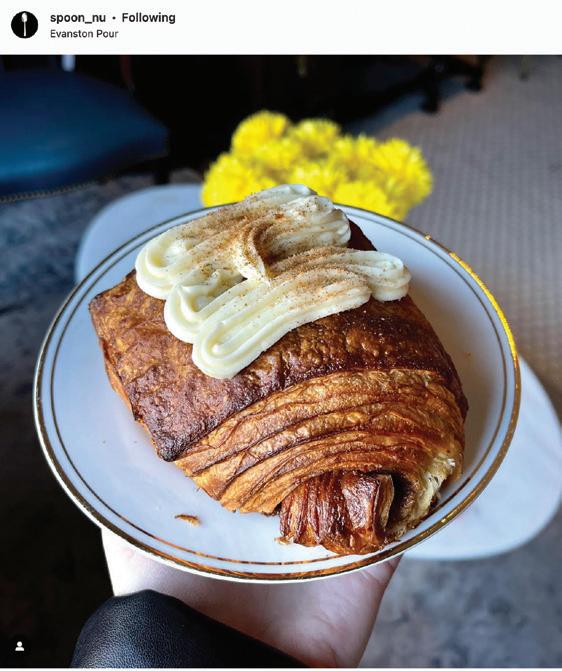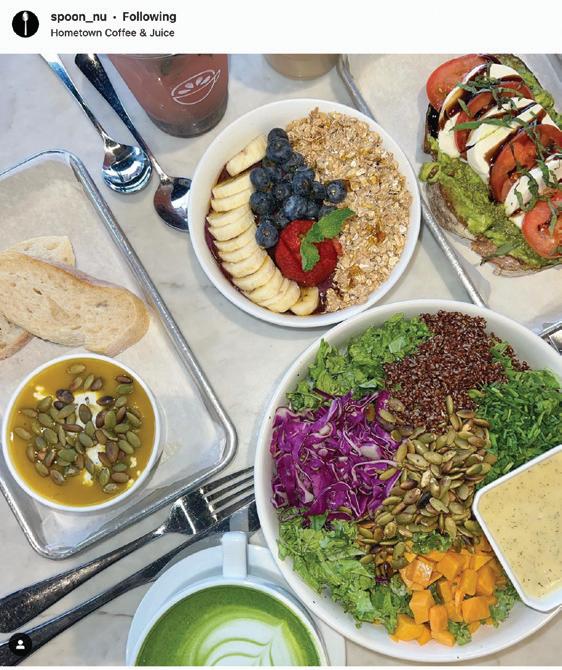









In selecting a theme for the 2023 Winter magazine, our team expressed an overwhelming desire to craft an issue representative of the diverse cultural and culinary backgrounds of our student body. Not only did we pen pieces on nostalgic childhood meals and recipes passed down from generation to generation, writers abroad wrote articles on the lessons they learned from their new surroundings and the role food played in finding their bearings away from home.

It’s fitting that my first stint as print editor, which coincided with my own semester in Italy, is reflective of the world travel I experienced first hand. Though I’ve since returned to the US (and am sorely missing the perfection of a gluten free Marinara pie), I will not soon forget the privilege of expanding my palate and perspective, and the people who made me feel welcome across seas.
The International Issue is a celebration of exploration, identity and coming together, no matter what is being served. Regardless of upbringing, there is an article for everyone in this magazine, along with the opportunity to dip (perhaps literally) into the unknown. Good food knows no borders nor bounds, so I encourage you to taste without limits and find new flavor — in both life and the kitchen. All you have to do is turn the page.
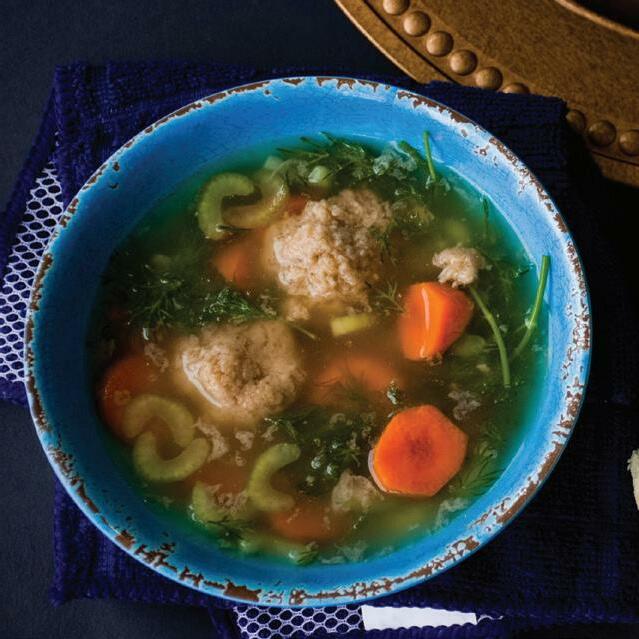
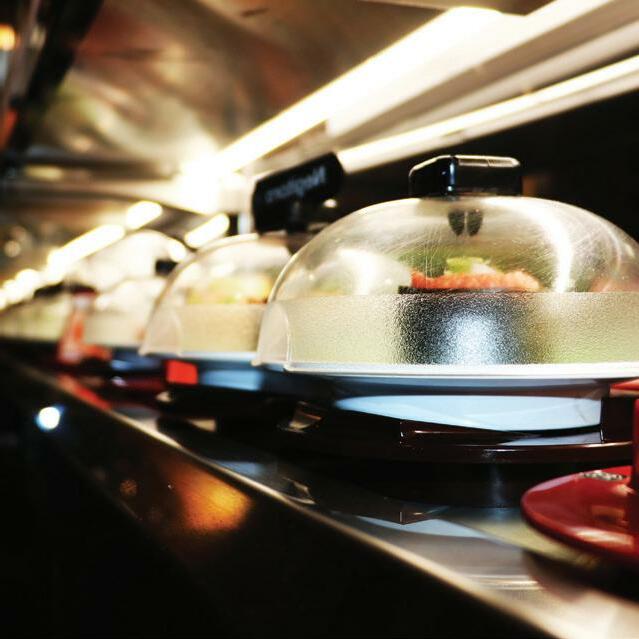



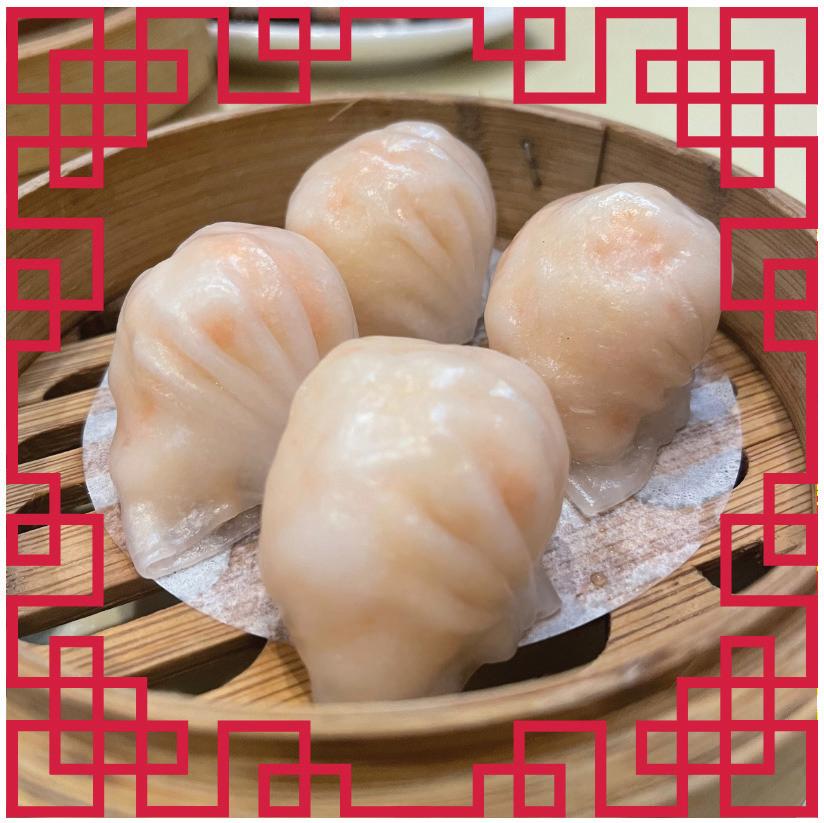 Never forks, Nixie Strazza Print Editor
Never forks, Nixie Strazza Print Editor
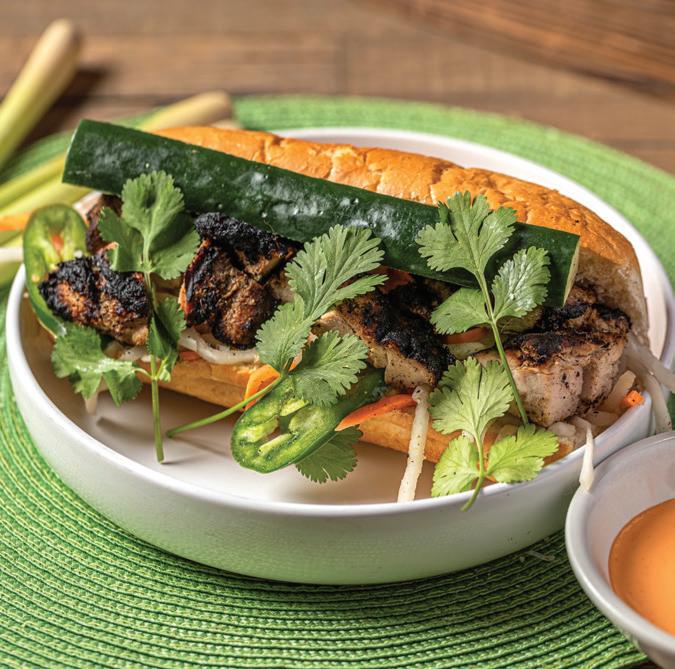
story and photos by anthony xie and emily chow
Spilling
design by kelly mengCreated in Taiwan, the original bubble tea, also known as boba or boba tea, features chewy tapioca pearls, milk tea and a sweetener. The drink gained a broader audience through the migration of Taiwanese immigrants, who transported boba across the globe. Now available in abundance, many bubble tea shops allow you to fine-tune drinks to your liking, with customization options like fruit tea or classic black tea, and toppings including grass jelly and ice cream. From humble beginnings, boba is a symbol of urbanism and cultural syncretism — a symbol found right here in Evanston.

The Taiwanese chain Happy Lemon is popular all around the world. With an assortment of fresh fruit, milk teas and specialty smoothies, it’s easy for anyone to find something they enjoy on the menu. Happy Lemon is famous for their signature salted cheese foam: a foam made from cream cheese, heavy cream and salt added to the top of their drinks.
Stop by Joy Yee for a one-of-a-kind selection of rejuvenating freezes and teas. They pioneered the combination of South Asian smoothies and beloved boba pearls. Their icy beverages are irresistibly creamy and have an extraordinarily bouncy tapioca texture. Among the extensive menu, don’t forget to savor their Mango Passionfruit Freeze or Oolong Milk Tea.
Guided by the principles of innovation and fearlessness, Kung Fu Tea is constantly pushing the boba envelope with eccentric new drinks, promotions and collaborations. Often paired with powdered milk, their floral-like tea is brewed every 3 hours and their boba is boiled every 2 hours for the freshest sipping experience. Try their bestsellers: Mango Green Tea or Taro Slush!
A relatively new boba shop in Evanston, Möge Tee might not be on your radar — but it should be! In addition to their wide selection of freshly brewed milk teas, they also have many yakult drinks, fruit teas and slushes. Möge teas all boast earthy, toasty and herbal flavors, and their tapioca pearls are a light, tan color instead of dark brown and softer than other typical brands.
Tealicious Bubble is a hidden gem for a refreshing beverage spanning from fruit pulp tea to matcha and everything in between! Their tea uses natural cane sugar, no flavored powders or syrups and always organic dairy. Balanced with ribbons of sweetness to create a rich, smooth texture, their tea packs an herbal and earthy punch. With its contemporary interior design and plushies wall, Tealicious Bubble is also a great place to snap some instaworthy pictures after you order. Our recommendation: the Brown Sugar Bubble Tea Latte!
Spoon talks roots of the classic Vietnamese sandwich and how to whip one up at home
The bánh mì is a masterclass in balance. The versatile sandwich traditionally boasts rich cured pork or marinated chicken, a lathering of mayonnaise and loads of fresh vegetables and herbs, all piled onto a flaky, light Vietnamese baguette sprinkled with Hoisin sauce. Beyond its complex flavor profile, however, the bánh mì has a deep history rooted in the triumphs and hardships of colonialism.
In 1885, extensive oppression and violent rebellions in Vietnam surmounted until the French Indochina Federation disbanded in 1954 after the First Indochina War. Aside from political and social influence, French colonial rule left a lasting impact on Vietnamese cuisine, introducing mayonnaise, wheat bread, coffee and charcuterie to the region. Vietnamese chefs took these new ingredients and added them to their repertoire, creating a fusion of technique and flavor. By the late 1950s, Vietnamese restaurants began serving a revamped version of the French dish casse-croute, a bread and charcuterie platter, in
portable sandwich form: the bánh mì.
The bánh mì has since gained popularity among gourmands worldwide. Owner of Evanston’s Viet Nom Nom, Alan Moy, explained how the sandwich encourages healthy eating in a fast-casual setting without skimping on taste.

“Our mission with Viet Nom Nom from the beginning was to address the problem of finding healthy, tasty food on college campuses,” Moy said. “We want to prove to our customers fastcasual food can still be fresh, local and chef-driven.”
With a couple condiments and excellent knifework, a craveworthy, customizable, and best of all, cheap bánh mì is well within reach for college cooks. Its simple ingredients leave plenty of room for personalization and individual flare.
Moy’s first tip: buy bread from a Vietnamese bakery. These baguettes are made with rice flour and are less dense than their French counterparts. Viet Nom Nom sources their bread from Nhu Lan in Lincoln Park, all part
of Moy’s mission to support local businesses.
“The bread has to be toasty and flaky on the outside, and light and fluffy in the middle,” Moy said. “Their products are really fantastic.”
If a Vietnamese baguette is not in the cards, a typical French baguette or a deli sub roll will do. To start, cut the bread lengthwise and spread liberally with your favorite mayonnaise.
Next, choose your protein: thinly sliced ham, marinated pork loin, grilled chicken or pan fried tofu are all great options. Then it’s time to get creative with your toppings. For a traditional bánh mì experience, go with cilantro sprigs, liver pate, pickled daikon radish and carrots, Maggi sauce (similar to soy sauce) or thinly sliced fresh cucumbers and jalapenos. But don’t be afraid to experiment! Personally, I love the combination of fresh mint and Thai basil, chili sauce, hoisin sauce, butter and scallions on my bánh mì. When your sandwich is assembled, cut it in half and enjoy with an ice-cold drink — like a Vietnamese iced coffee!

Navigating açaí shops as a native Brazilian and creating the ultimate taste of home
When international people living abroad are asked the best places to find their native cuisine, one word always comes to mind: authenticity. How do you replicate familiar flavors a thousand miles away? The search to find food in another country that tastes exactly as it does back home is never ending. As a Brazilian who recently moved to the United States, this problem is particularly personal. I prioritized bringing pieces of Brazil into my everyday life, with a specific emphasis on food. Living in a large city like Chicago makes it easier to find famous dishes like churrasco — barbecue prepared in a special type of grill known as a parrilla — feijoada
(beans), and, most importantly, açaí. Açaí is easily one of my favorite Brazilian dishes and is beloved throughout the entire country, rather than just a single region.

After months of searching for an açaí spot up to my standards, I finally succeeded. Owned by a Brazilian family, Deep Purpl, imports its açaí directly from the rainforest region of Brazil. The company offers several toppings popular in Brazil including condensed and powdered milk. The chain has locations scattered throughout Evanston and Chicago, many of them which employ Brazilian-born servers as part of their mission to represent the community.
The trick to authentic Brazilian açaí is getting the toppings correct. The layering technique is integral to the experience, and Deep Purpl hits the nail on the head. The bottom layer calls for granulated peanuts, which give a crunch to every bite and add a savory balance to the sweet taste of the açaí itself. The next layer, from the bottom up, is powdered milk so the açaí’s tanginess is also counteracted. Further up the bowl comes a layer of fruit, preferably banana and strawberries, topped with condensed milk. The hint of zest and silky smoothness of the condensed milk make for an excellent pairing. Between each topping is a thick layer of açaí, tying everything together.
What I did find, however, after moving to the United States, were the ways in which we Brazilians could learn from American preparation methods to make our own açaí even better. Here, I’m able to add fresh blueberries to the top layer of my bowl, a fruit in limited stock back at home. Almond butter, more widely available in America, is a great substitute for peanuts at the bottom layer of your bowl; its distinct texture an extra element of smoothness. Some Americanized versions of Brazilian meals rival or even outshine their original counterparts, like cheddar-filled pães de queijo or açaí bowls with whey protein powder. In the end, grabbing a spoonful of açaí and letting it melt in my mouth — even if it is the adapted version — transports me home no matter where I am in the world. The climate may not be ideal for blended açaí, but I’m lucky to have a piece of Brazil right here in Evanston.


Every country has a version of street food — we’re just lucky to get to try them all. An immigrant-influenced city, Chicago is no stranger to the street eats sold in markets, out of trucks and on corners around the world. Street food is a bite of culture rich in history and flavor, its casual nature a reflection of the vendors and common people who created it. Discover more of the Windy City by sampling seven of our favorite international street food picks.
Bonci is a sliver of Italy in the heart of Sangamon Street. They pride themselves on seasonal ingredients brought straight from farm to table, which means their daily menu can change on a dime. Their Romanstyled pizza comes in bitesize slices that are airy yet crisp, and the Soppressata, Potato and Mozzarella pizza is unmatched.
Grilling is an everyday affair at Kabobi. Convenient yet addictive and known for “sizable portions,” the restaurant specializes in Mediterranean and Persian cuisine like juicy chicken shish kebabs, warm basmati rice served on a bed of larger-than-life flatbread and plates of nutty Baklava. Head to Kabobi for the biggest bang for your buck.

Seoul Taco is all about KoreanMexican fusion street food that leaves you wanting more of their Sweet Potato Waffle Fries and stacked Nachos. Whether at one of their four Chicago locations or tracking their food truck, Seoul Taco is a go-to for comfort food and latenight munchies. Hop on the CTA and try their Kimchi Fried Rice Burrito ASAP!
On the corner of Clark Street, you’ll find Chicago’s beloved fast-service café, Xoco. Developed by chef Rick Bayless, their bold marketplace flavors and impressive menu of tortas, tlayudas, tacos and chocolate churros (just to name a few) transport you straight to the streets of Mexico. Order their Spicy Churro Chicken Sandwich — crispy chicken breast stacked on a sweet churro bun — and bean-to-cup hot chocolate.
Street eats and small bites to try in the Windy City



Since 1986, Chiu Quon has crafted traditional Hong-Kong style pastries for all of Chicago to enjoy. Using tender cuts of meat, pillowy dough and fresh custard, the oldest bakery in Chinatown is heaven on earth. Nothing compares to their flaky Dan Tats, Char Siu buns stuffed with barbeque pork or Lotus Bean Mooncakes.

Owned by its upscale, older sister eatery Au Cheval, this casual, fast-paced joint aims to serve allAmerican classics with all-natural ingredients. Munch on their 100% beef cheeseburgers, golden fries with garlic aioli and a boozy shake on the side.

Featuring a slow-cooked blend of seasoned meat on a spongy pita, Mr. Greek Gyros is the place to be — no matter how you pronounce their namesake sandwich. Open until 1 am, the Greektown staple is the ultimate street food experience perfect at a table or on the go. Choose their Chicken Gyro Plate and Italian Beef Sandwiches for a hearty feast.
Carts roll out of the kitchen stacked high with shrimp dumplings, steaming hot rice rolls and perfectly flaky egg tarts. Warm, fluffy buns stuffed full of sweet, sticky barbeque pork sit in bamboo steamers, waiting to be devoured. The clock barely strikes 11 am, but MingHin Cuisine, a dim sum restaurant in Chicago’s Chinatown neighborhood, is raring to go.
Dim sum, a beloved meal believed to originate from Guangzhou, China, is typically enjoyed in the early morning, but many Chinese American restaurants have altered their dim sum hours to include brunch or even dinner. The meal itself consists of shareable, small plates of dumplings, pastries and other baked, steamed and fried

delicacies.
After getting seated, don’t order coffee — think tea. The act of drinking tea (yum cha) is at the heart of dim sum dining. Restaurants usually provide three types of tea: Pu’er, Jasmine or Chrysanthemum flower, called ju hua in Mandarin (my family’s favorite). The tradition is rooted in dim sum’s early days, when travelers on the Silk Road turned to tea rooms for a quick meal.
A distinct feature of dim sum is its ordering style. Waiters don’t come to your table and ask what you want. Rather, they maneuver carts adorned of food
through the maze of tables. Keeneyed customers flag down the carts that carry their favorite dishes.
No longer must you brave the Silk Road for a warm meal, dim sum’s popularity has taken its presence worldwide, including here in Chicago. MingHin is one of Chinatown’s top-rated dim sum spots with recognition in the Michelin Guide. Though dim sum is the restaurant’s claim to fame, MingHin also serves an extensive menu of Japanese and Cantonese
MingHin’s staple dim sum items , juicy shrimp dumplings with a translucent , chewy pork and shrimp dumplings topped with orange fish roe. Another , a long, white rice crepe
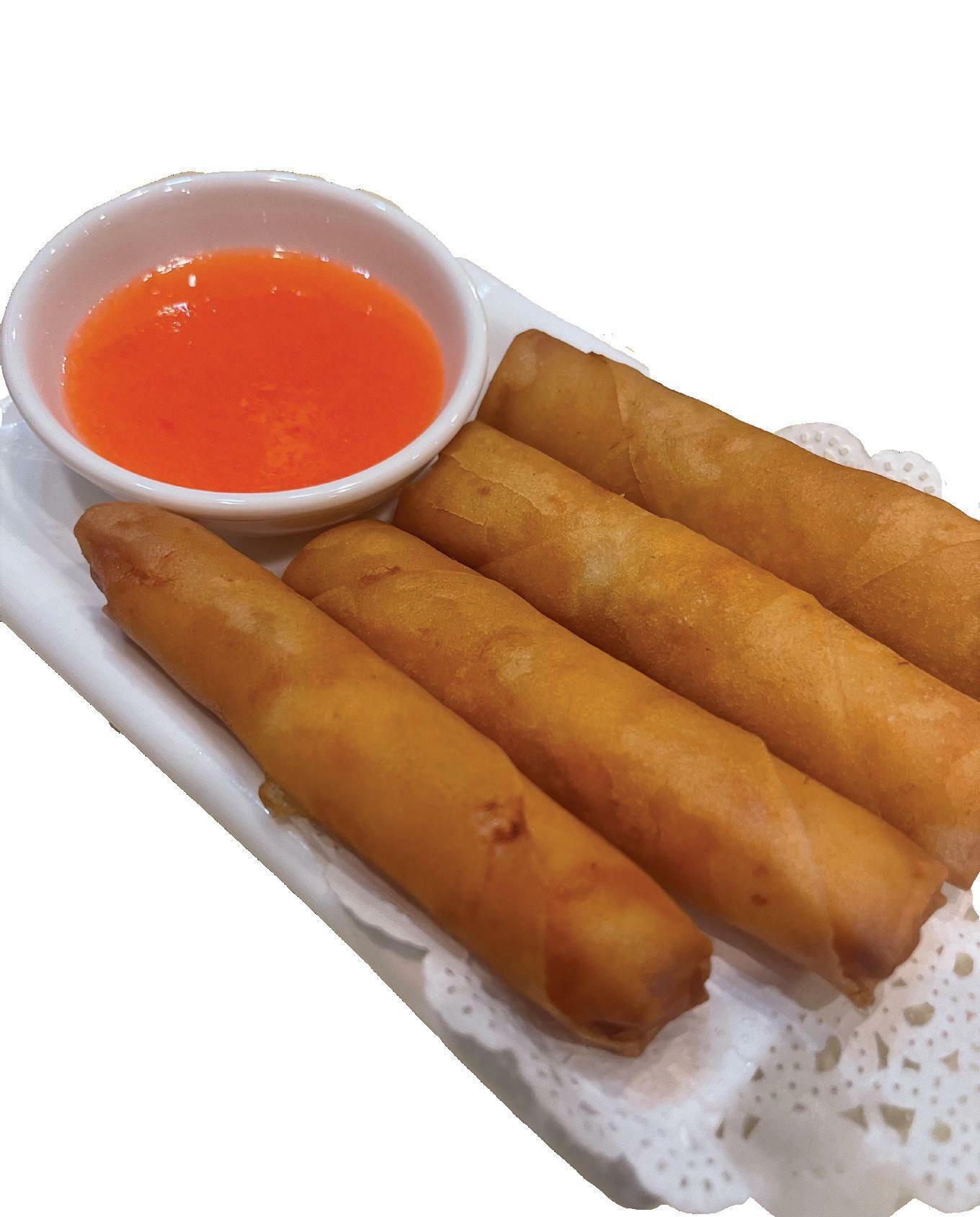
noodle with a thick consistency. Usually wrapped around shrimp or beef and doused in soy sauce, it pairs nicely with youtiao, a long donut with a crisp outside and airy inside.
Many MingHin meat dishes contain char siu , Chinese barbecue pork. We ordered char siu bao, a baked bun with a sugary egg wash stuffed with sweet char siu, and char siu sao, a crescent of flaky puff pastry with a pocket of warm char siu.

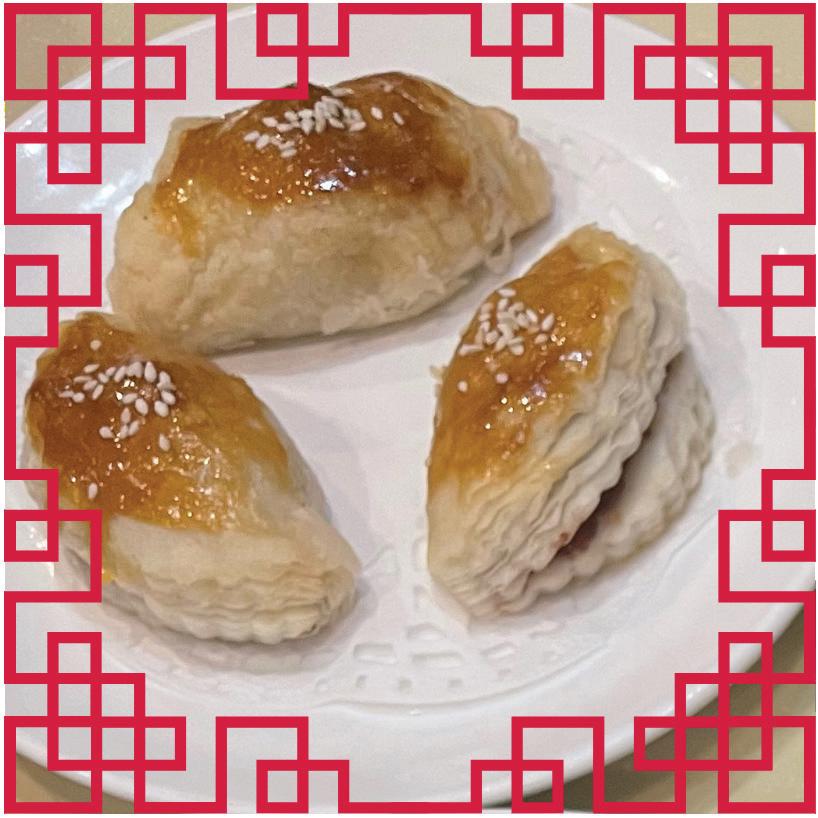




Like all good spreads, dim sum is never complete without dessert. Egg tarts or dan tat, which have a flaky pastry crust and smooth custard filling, shine like the sun. Sesame balls, my childhood
favorite, are crunchy on the outside yet chewy and sticky on the inside thanks to the glutinous rice flour used in preparation. The gooey red bean filling feels like a warm hug. After stuffing ourselves full at MingHin, one thing is clear: dim sum is all about connection. Simultaneously sharing food and conversation is what makes the meal special, the tiny plates passed around a reason to engage with family and friends. When enjoying your delicious dumplings, remember to appreciate those around you, look for the best carts and order one of everything…and dim sum.
EVANSTON PLAZA’S VALLI Produce International Market sells an expansive variety of ethnic foods not found in Mariano’s, Jewel-Osco or Whole Foods. I visited Valli Produce to ask employees and regulars to share snack recommendations, and bought the most highly praised items to rank.
BALCONI TRANCETTO FRAGOLA
THESE SPONGE CAKES, akin to a Hostess product, ranked last because the aromatic strawberry filling’s mellow sweetness could not make up for the dense, dry and crumbly sponge exterior.
THIS “ITALIAN STYLED Waffle Cookie” was just that – a waffle cookie. It tasted exactly like a waffle cone, but with a hint of chocolate.
THESE SANDWICH BISCUITS melt in the mouth. The chocolate cookies crumble like shortbread, and the fudgy centers complement them nicely without being overbearingly decedent.
THESE COOKIES, WHEN dipped in milk as intended, these cookies snap softly and taste of sweet vanilla, similar to American Nilla Wafers.
A definitive ranking of Evanston’s favorite international snack foods
AFTER A FEW seconds of chewing, these puffs move quickly from corn syrupy hyper-sweetness to a well rounded umami flavor. The aftertaste is interestingly that of a balanced meal, rather than a cheeseball-textured snack.
THIS DRINK IS for Jell-O and boba lovers. Each sip is filled with small, gelatinous basil seeds. This texture was not my personal favorite, but the pleasant orange flavor was reminiscent of mandarin orange cups.
THIS SODA IS a new go-to of mine. It has a spiced bite like ginger beer, but the pineapple cuts the sharpness with an underlying fruitiness.
ULTIMATELY, THE BEST snack I tried was the simple, perfectly salted Jamaican cream crackers. The crackers are crisp and dusty, almost feeling parmesan-crusted.
story and design by nadia bidarian
Forget pancakes and fried eggs. Which international breakfast best fits your personality?
QFavorite spot on campus?
A. The Lakefill B. The Arch C. The Rock
Must-have breakfast side:
A. Fruit B. Coffee C. Tea
Pick a flavor profile: A. Sweet B. Savory C. Spicy
Ideal place to live (if not Midwest):
A. West coast B. East coast C. South
If you got mostly A’s, welcome to Brazil! You are Tapioca Crepes and Fruit. Like these delicious crepes, which can be filled with grated coconut, mixed berries, cheese or eggs, you are sweet and sensitive. You give the absolute best gifts, paired with handmade cards that Hallmark wishes it thought of first. You make our mornings bright.
If you got mostly B’s, South Korea is glad to have you here! You are Gilgeori Toast, a popular salty-sweet egg sandwich sold by street food vendors in Korea. Like Gilgeori Toast, you’re nostalgic, a staple in everyone’s friend group or classroom. You’re a classic.
If you got mostly C’s, I ndia has you covered. You are Dosas, a crisp lentil crepe filled with savory preserves called chutneys. You’re often seen at Norbucks, sipping a cup of hot tea. You are strong, outspoken and a force to be reckoned with. We love you for it.
QFriends would say you are... A. Sweet B. Strong C. Wild
Pick a breakfast time: A. 7 a.m. B. 9 a.m. C. 11 a.m.
Utensil of choice: A. Spoon B. Fork C. Hands

If you got a mix of A’s and B’s, you are Pan con Tomate, a Spanish-style grilled bread with tomato. You are easygoing and secretly quite complex. You study in niche nooks of campus and create elaborate Spotify playlists that outshine those still streaming Top Hits. Yet you’re very approachable.
If you got a mix of A’s and C’s, you are Serpme Kahvalti , a Turkish breakfast that is a literal feast, featuring dozens of tiny dishes of veggies, cheese and jams. Your room is filled with mementos but in an indie, Pinterest sort of way, not in a hoarder way. Your interests are as diverse as this dish!
QIf you got a mix of B’s and C’s, you are Jamaica’s national dish, Ackee and Saltfish – a sautéed mix of ackee, Jamaica’s national fruit, and cod. Just as the nutty ackee fruit complements the salty cod, your odd major-minor combination fits you and no one but you. You’re the life of the party!

story and photos by jess bradford There is no better format for eating than “the bowl,” an eating format ripe with opportunity. Be it ramen, rice or açaí, Evanston’s bowls take inspiration from across the globe to keep our stomachs and palettes pleased. But, not all bowls are created equal. Before building your own, get the scoop on which bowls are worth it, and which are a waste of time.
Build-your-own bowls in and around Evanston transport you from the Mediterranean to Japan, no passport required



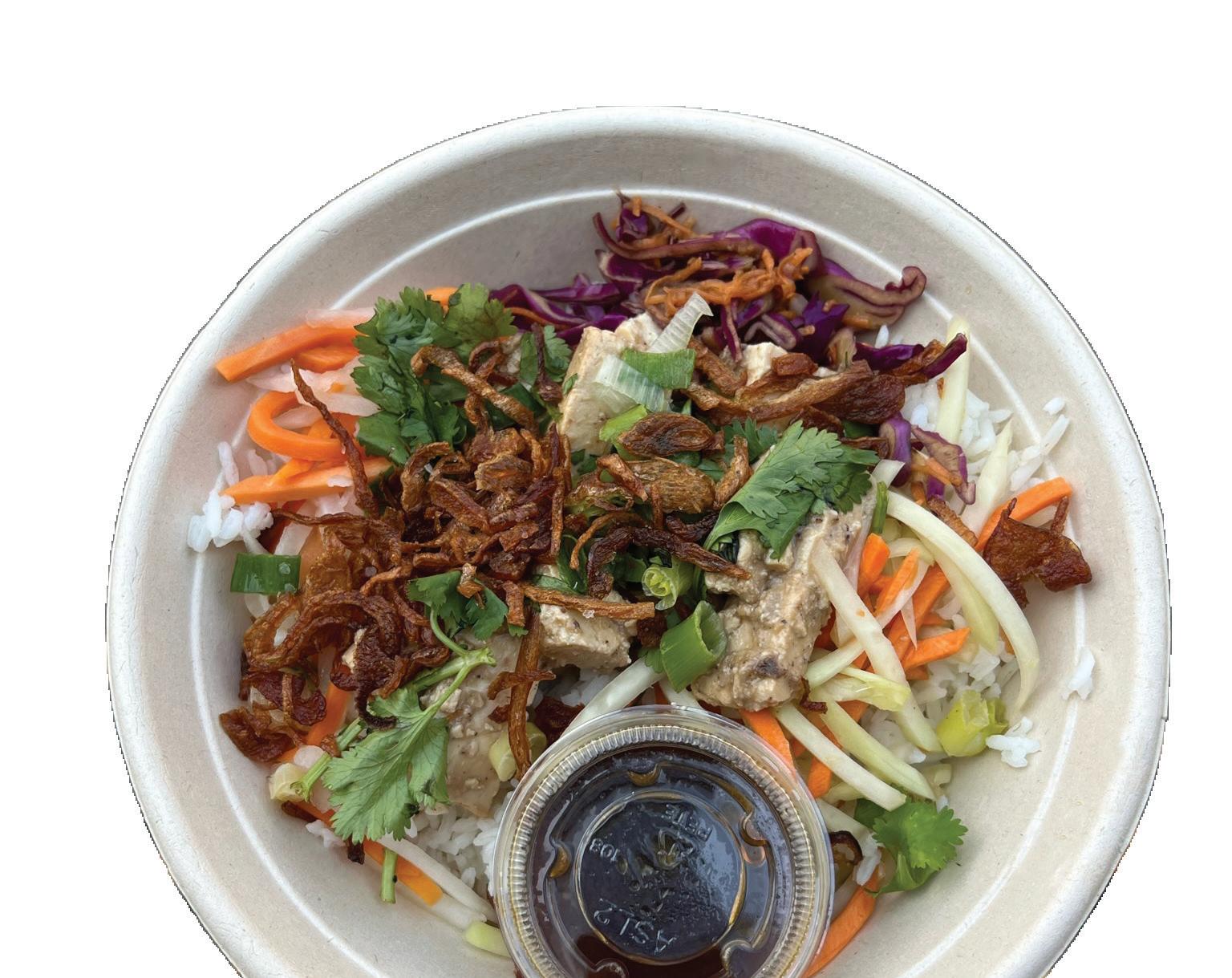
My one-time use of Pono
tomo ramen
Tomo arrived in Evanston spring 2022 and solidified itself as my go-to “I have a cold for the third time this quarter” spot. Despite my reliance, the veggie and noodle packed broth lacks a sufficient punch of umami and spice on its own. The shortcoming in complex flavor is nothing that can’t be solved by the addition of a poached egg (and some sriracha).
Ono’s frequent customer punch card is shocking given my weekly pilgrimage down Chicago Ave. The curated and build-your-own options are extensive, and I’ve never had a bowl I didn’t like. My go-to is The Works: a variety of fish, crunchy vegetables, bright pineapple and sweet umami marinade with spicy mayo that hits every time.
A Northwestern staple, Viet Nom Nom is popular for Vietnamese bahn mi sandwiches and rice bowls topped with cilantro, pickled veggies and crispy shallots. Though students seem to flock to the Norris Center location, I found the most memorable part of the meal to be the price point. There was nothing wrong with my bowl, per say, but it lacked variety in both texture and flavor.
Though technically a not a bowl, Deep Purpl’s set up still allows you to load up on unlimited toppings. A variety of fruits, seeds and nut butters create a refreshing blend of crunchy and smooth textures. The topping variety cannot, however, detract from Deep Purpl’s mediocre base. The açaí blend itself does not allow for incorporated add-ins like protein powder, different nut milks or other fruit. I recommend Deep Purpl to students looking to satisfy a craving or those on a health kick, but turn elsewhere for out-of-this-world açaí.
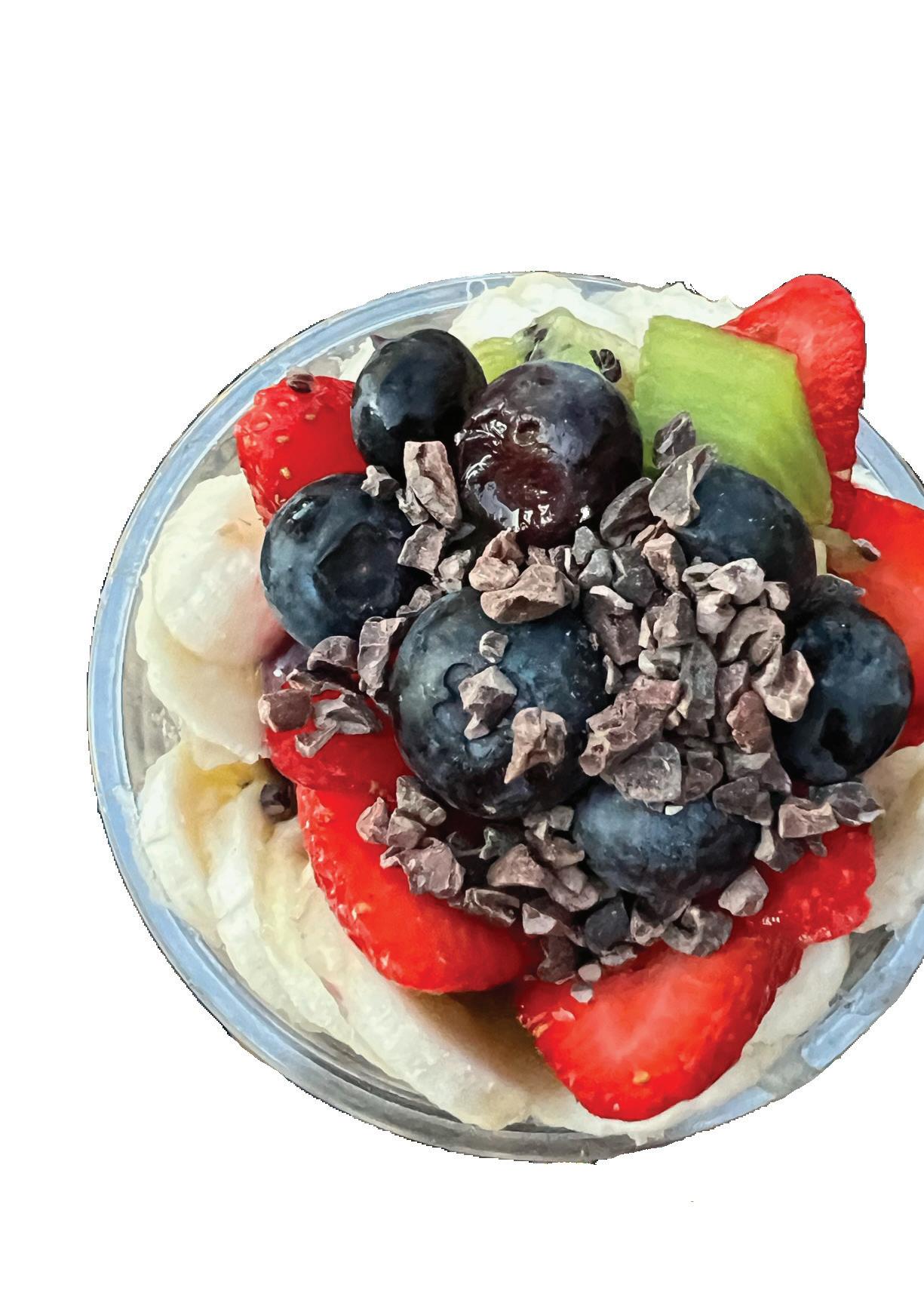


One could argue Chipotle is the blueprint for all bowl restaurants. 2 types of rice, beans, numerous protein options, salsas; the combinations are plenty. A reliable friend no matter how much time has passed, Chipotle remains just as you remembered them. In this case, savory, filling and served with extra guac.

Roti was the closest I came to satisfying my near-daily need for Cava, and in most areas, it did the trick. Roti’s variety of proteins, toppings, and sauces mirror Cava’s, and in some categories even outshine the original fast-casual Mediterranean bowl (I love the addition of salmon to the Roti menu). Each bite brought bright and acidic flavors mixed with rich and creamy sauces. My complaints: the high price point and lack of flavor in the pita.




Adrak Chai makes up about 40% of my mom’s bloodstream, I genuinely think she drinks more chai than she does water. Naturally, I had to include the recipe! You can find chai anywhere you go in India. My massi (my aunt) makes the best Adrak Chai (ginger tea), and it’s the first thing she does every morning. Our Delhi visits begin and end with a freshly made cup of chai, a few biscuts, and an hour long gossip session while we finish up our first, second, and third cups. My family is incredibly close so our chai ritual is extremely special. This recipe always reminds me of my Suman massi!
- 1 piece fresh ginger - 3-4 cardamom pods - 5-6 tsp white sugar - 4 cups water - 3-4 tbsp black tea powder (loose)
- 1/2 cup milk (whole or plant-based)

1. First start by washing, peeling, and grating the ginger.
2. Grind together cardamom pods separately, and keep it to the side.
3. Fill a pot with the 4 cups of water, place onto your stove at medium heat, and then add your ginger and cardamom. After 4-5 minutes, the water should turn yellowish.
4. Add the white sugar.
5. Let it simmer for a few minutes on low, and then add black tea powder or black tea leaves
6. Once it turns a dark reddish brown color, it’s ready. Add half a cup of milk into the pot (if you’re using plant-based milk, warm up the milk inside your mug and skip adding it to the pot). Strain your chai and enjoy!

My Poonam Massi’s famous Palak Pakoras are an incredible appetizer and easy to whip up. After one bite, you will crave these just like I do. My cousins and I beg for these spinach fritters every time we get to see my Massi, and I swear we genuinely fight over who gets the last one.

-2-3 cups spinach, roughly chopped - 1 red onion
- 2-3 green chilis - 1 bunch cilantro - ½ teaspoon of ginger garlic
- ½ teaspoon of cardamom seeds (crushed) - ½ teaspoon of red chili powder

- ½ teaspoon of garam masala - ½ cup gram flour (Besan) - 7-10 roasted cashews or

peanuts (optional) - 2 tablespoons rice flour (optional)
- Neutral oil for frying (vegetable, peanut, canola, etc.)


- Salt and pepper to taste Mint Chutney (optional): - 1 bunch cilantro, coarsely chopped (stems and leaves)
- 1 bunch mint, leaves picked, no stems - Juice of 2 limes
- 1 small serrano or green Thai chili, cut off stem - 1 teaspoon cumin seeds



1. Start by preparing the vegetables. Wash and roughly chop the spinach. Slice the onion into thin, uniform pieces.
2. Add the onion to the spinach and season with salt and pepper to taste.
3. Dice the green chilis, and roughly chop ¾ of the cilantro bunch. Fold into the spinach mixture and mix carefully.
4. Add in the garlic ginger paste and the rest of the spices. Adjust seasoning to taste
5. OPTIONAL: chop cashews or peanuts and add to the spinach mixture.
6. Set the mixture to the side. Pour about an inch of oil into a large saucepan and heat up.
7. Add gram flour and rice flour to the spinach mixture and fold together. If needed, sprinkle a tiny bit of water to loosen up the mixture.
8. Once the oil is hot, take small sections of the mixture, press into desired shape and place into the oil. Cook until golden on the outside, making sure all sides are crispy.
9. For the chutney: blend together mint, cilantro, lime juice, chili and the cumin seeds until smooth and set aside.
10. Once cooled, serve with chutney! (and maybe even a cup

Sharing a kitchen with six roommates made for the constant rotation of pasta pots, panfried veggies and the opening of the oven door during my semester abroad in Italy. Each from a different part of the world, we brought

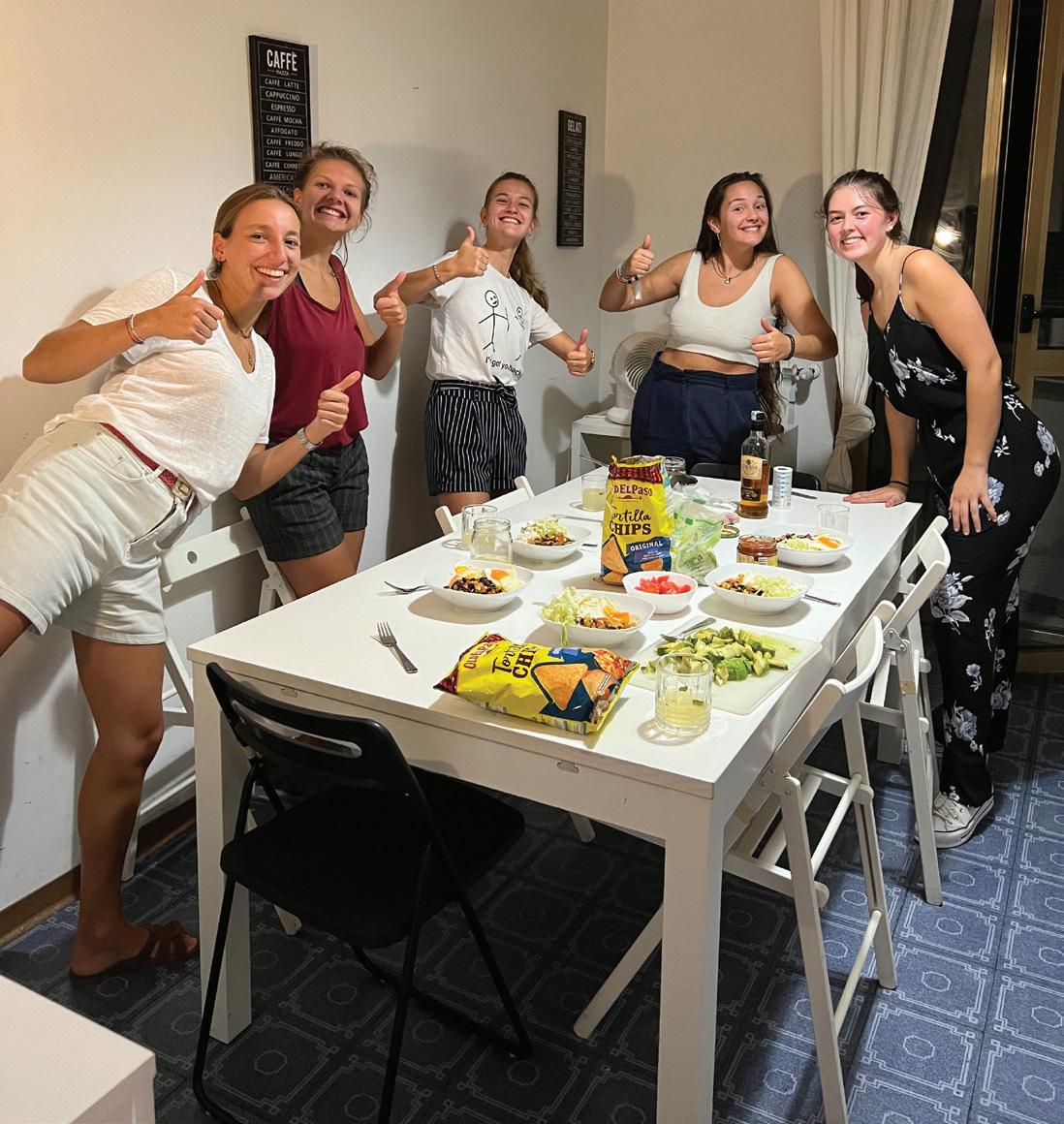

with us the best of our individual cuisines to create a common feeling of home. Cooking filled the gaps in our combined seven languages where spoken word failed. With every meal, we fostered a sense of belonging in our little Bologna apartment.


Carrot tarts and caprese salad sliced expertly by Alicia from France, Jimena’s Spanish nachos and fresh-cut fruit, Franceso’s traditional carbonara (sans cream!) and Micha’s chickpea curry were all frequent favorites, along with pumpkin pie and a French toast brunch introduced by the Americans — a dish Alicia insisted on calling “lost bread.”
We made everything an occasion to cook elaborate spreads — be it birthday parties or Wednesday evenings — our ample terrace space an open invitation for friends to grab a chair
and join the family. I traveled all around Europe, but my favorite memories are still those made in our cramped kitchen, dodging cabinet doors while preparing dinner to the sounds of international pop music playing in the background. There aren’t enough pages to share all the food we ate, but this recipe for Red Kuri Risotto (a type of squash I was only recently made aware of) brings me back to our plant-filled kitchen, where the figs were ripe, the paprika was plenty and there was always something simmering on the stove.
design by catherine erickson



Hokkaido (Red Kuri) Squash Risotto

Recipe by Micha Kuijper

Home Country: The Netherlands

450g squash flesh (skin on)
1 shallot
1 garlic clove

2 tbsp olive oil
2 tbsp butter
350g risotto rice
100ml white wine

1 liter vegetable stock
2 tbsp crème fraiche
50g Parmigiano Reggiano
Pepper to taste
Watercress for garnish
Cut the quash in square pieces. Dice the shallot and garlic.
Place a pan on medium heat and sweat off garlic and shallots in a glug of olive oil. Gently cook until softened before adding the butter and squash.
Sauté the vegetables on medium for a few minutes. Stir in the risotto rice and let the mixture sit for one minute.
Pour in the wine and when it simmers start adding the stock little by little. Continue cooking for 20 minutes, stirring occasionally.
Once the rice is almost cooked through, add the grated Parmigiano Reggiano and crème fraiche. Add pepper to taste and cook under tender.
Sprinkle some cress over for garnish and serve.
Eet smakelijk!
Once the leader of culinary innovation, the role of French cuisine has shifted with modern times

Baguettes! Cheese! Wine! Ratatouille! For many Americans, food is the first thing that pops into mind when asked about France; and this comes as no surprise. French chefs were among the first to codify cooking techniques and classic recipes after restauranter and culinary writer Auguste Escoffier shared his love of French food with the world in 1903. Even before Escoffier, Americans were obsessed with France and all their butter-filled dishes. Thomas Jefferson famously wrote a recipe for macaroni and cheese he reportedly brought back from France — meaning we have, in part, the former president to thank for microwavable mac and cheese cups and the widespread adoption of French cuisine.
Americans continued to hold onto their French culinary fascination well into the 20th century. Julia Child’s television program “The French Chef” taught Americans how to cook and ran for an
Once the leader of culinary innovation, the role of French cuisine has shifted with modern times.


astonishing 10 seasons between 1963 and 1973. The Michelin Guide, produced annually by French-based a tire manufacturing company of the same name, sets the gold standard for restaurant quality with their fine dining awards known as Michelin Stars (which controversially favor French-influenced restaurants over all other cuisines).
The menus at Americanized “French” restaurants, however, have changed along with evolving food trends. The once coveted, filling plates of “the best restaurant in America,’’ Le Pavillon are being challenged by contemporary, plant-forward counterparts like Napa Valley’s farm-to-table The French Laundry. American cuisine is also undoubtedly the result of an array of influences, including those outside the world of French fine dining.
Chef Michael Lachowitz of the George Trois Group, a two-restaurant operation based in Winnetka, Illinois, has worked in French restaurants for over 40 years. The seasoned professional has watched the cooking landscape change from the days of “butter, butter, cheese, butter, cheese, butter and cream,” towards a more nutritionally-balanced diet. Even traditional establishments have been forced to update their menus based on new preferences.
“There is a reason I don’t cook like they did back then,’’ Lachowitz said. “If cuisine doesn’t continue to adapt, it’s like a shark that stops swimming — it dies.”

Escobar said. “I didn’t take it because I wanted to work in French cuisine, I took it because I needed a job.” Escobar said the Covid-19 pandemic was the catalyst for seismic shifts in fine dining. The widespread closures, limited workforce and high demand, though difficult to overcome in the moment, opened the door to the prevalence of faster, cheaper food options — many of them derived from immigrant cultures.
if cuisine doesn’t continue to adapt, it’s like a shark that stops swimming — it dies.
“ “
According to Lachowicz, Americans won’t remain enamored by French food forever. Moving away from a “melting pot” or assimilation mindset, Lachowicz said today’s chefs are more focused on championing an “indigenous society of foreign backgrounds” and highlighting their personal roots through food. Rather than erasing other cultures to fit the mold of fine dining, American cuisine has the potential to break barriers. As a Spanish-American and aspiring chef, Lachowicz’s words stuck with me. Why shouldn’t I showcase both sides of my upbringing through the meals I choose to create?
Chef Miguel Escobar, Lachowicz’s managing partner and right-hand man, expressed a similar sentiment regarding American culinary culture. A proud Mexican, he wanted an outlet to cook the foods of his homeland in an elegant setting, but encountered barriers already built into American cuisine for those outside the French realm.

“The first job I took was at a French restaurant,”
The complete revamping of the restaurant industry made possible the inclusion of formerly forgotten or silent voices in elegant eating, like Mexican, Spanish and African cuisine.
Now, more than ever, food publications and rating companies are working to welcome individuals of multicultural backgrounds to their staff, opinion boards and test kitchens to reflect a more well rounded understanding of food. Just last year, 14 current and former staffers at Bon Appétit gave detailed public accounts of the magazine’s “toxic” workplace environment and “second-class” treatment of people of color; a cause for introspection across the entire industry.
Though France has long held its crown as the master of gastronomy, America’s constant culinary evolution and a push for greater representation in fine dining may be enough to usurp the king from his throne. Location is not the determining factor of good food, and as Lachowicz reminds us, “delicious doesn’t know an ethnicity.”

Sketchbook Brewing is a gem of the Evanston bar scene. Even during its quiet noontime opening hour, the interior is bright and full of life. Stained wood panels, hanging plants and handdrawn beer nameplates forge a welcoming, warm atmosphere.

Only four of the twenty beers on tap are available year round; the rest get swapped out based on season and preference, and all of Sketchbook’s offerings are locally brewed in Illinois. The taps also showcase a guest cider from local brewers and a non-alcoholic kombucha for sober patrons. General Manager Barb Cascio made a point of highlighting that her guest on-tap options come from local women-run breweries. For an additional touch, Sketchbook’s in-house beers are gas-brewed under the bartenders’ feet, resulting in an unbeatable texture.
Cascio and the staff work together to brainstorm funky names for their inventive brews. Some of the original titles come from Sketchbook’s origins in the breezeway behind the current property. Patrons would have to drive through the alley to the “Orange Door” — now the namesake for a malty IPA. A cab stand that used to sit back there
had signs that read “No Parking” and “Insufficient Clearance”— the names of a pale ale and a fruity IPA, respectively.
Bartender Beesy Malone said one of her personal favorites is a currently-unavailable imperial IPA cheekily called “Night Game.”
“It’s delicious,” she mused. “We use a little bit of honey when we ferment it, and it’s just so good.”
Cascio loves “Pinky Sweater,” one of the bar’s four core yearround brews. She considers the red rice pilsner a good introductory beer for those getting acquainted with the world of brewing.
“It’s light, it’s crisp, it’s really refreshing,” Cascio said. “When people come in who are new to craft beer and say they like Miller Lite or Coors Lite, I hand them a Pinky Sweater.”
For a novice of craft beer, these options might seem daunting. But the staff’s cheerful attitude and genuine excitement about the art of beer brewing quells anxieties fast.
“Part of it is having the experience of the expertise of the staff,” Malone noted. “It’s a very cozy, coffee-shop environment here, and the beer is just better when it’s brewed here and on tap.”
Tapville Social takes a similar approach when it comes to its drink selection.
“We try to give our guests a really good variety of beers,” said director of operations Alberto Vieyra.
He pointed out the categories that designate the taps on the wall: Light & Crisp, Fruity & Spicy, Sour & Funky, Hoppy & Bitter, Malty & Sweet, Dark & Roasty. The vast array is suddenly made more approachable, and patrons quickly feel at home under the high ceilings, warm wood-toned furnishings, and friendly staff.
The restaurant keeps about three-quarters of their beer list local. And, like Sketchbook, Tapville only has two or three beers they keep available all year.
“Once a beer runs out, we have a completely new beer ready to come in on tap,” Vieyra said. “There’s constantly this awesome, fresh list for people. You’ll see new kegs just about every week.”
When prompted, Vieyra joked he couldn’t possibly pick a favorite brewery, but that he likes recommending a good pilsner or lager that falls into the “Fruity &

Spicy” category. General Manager Melissa Renta said she’s partial to the sweet ciders, which occupy a separate side wall of taps apart from the beers.

“We have a Prickly Pear Cider on tap that’s really tasty,” Renta noted. “We also have in-house sangria that we craft here that always does really well.”
For Evanston residents and Northwestern students, Tapville is definitely something special. “Everything is at the guests’ fingertips,” Vieyra said, referring to the restaurant’s ultraconvenient digital card payment method. Guests swipe their card as they order dishes or fill their cups, and are automatically charged once they leave, making it easy to come and go as they please.
Renta said she loves when customers come in unsure of what drinks to try. Gesturing to a shelf stacked with flight glasses, Renta said they’re waiting to be filled with as many different options as desired. While the copious options may intimidate a non-connoisseur, the welltuned ambience and small-town character makes venues like Tapville and Sketchbook an easy choice for a night on the town.
Imagine a dining experience where your food arrives not from the hands of a waiter, but on a conveyor belt! This dynamic setup is what makes Kura Revolving Sushi Bar both an entertaining and satiating spot for Japanese cuisine.
The original Kura Sushi in Sakai, Japan first opened its doors in 1977, but the conveyor belt wasn’t implemented until 1984, when the company officially established itself in 1990. After tremendous growth, the restaurant chain now has over 560 locations across Japan, Taiwan and the United States — each with the signature experience of moving sushi rolls.
Compared to traditional restaurants, where customers depend on waiters, guests at Kura Sushi can begin eating as soon as they are seated. The doublelayered conveyor belt system transports more than 140 menu selections straight to the table. Customers claim the dish they like by pulling upward on the plate to release its plastic casing, then digging in. Diners can also order from an electronic menu tablet situated at each table. These
prepared dishes arrive from the kitchen via an express belt Kura Sushi calls a “sushi highway.”
After making selections, the bill is calculated by the number of plates put into a specificallydesigned dish chute programmed to tally the amount of plates deposited. For every 5 plates, the dish chute lights up a “Bikkura Pon” game machine, giving the dining guest the chance to win a prize.
my summers in Japan, and ate countless meals at my favorite restaurant, Kura Sushi. I loved meticulously examining each food choice before making my selection as they wrapped around the store. I always made sure to eat a specific amount of plates to allow myself a shot at winning a prize from the “Bikkura Pon” machine. Every time I went, I would try to break my old record of plates eaten (I maxed out at 16 plates, a whopping 32 pieces of Nigiri sushi). Though stuffing myself full of rice-based dishes was an interesting childhood challenge, it always gave me a reason to return.
There is truly no other restaurant experience like Kura Sushi in the U.S.
“ “
PR and Communications Manager of Kura Sushi USA Lauren Murakami said the conveyor belt gives each restaurant “a sense of constant motion and excitement,” different from the typical dining experience. The business model attracts guests who are looking to delve into a fun, experimental way to eat, that Murakami calls “mealeater-tainment.”
As a Japanese-American, I spent
During a trip to Seattle, I was delighted to find that my favorite restaurant also existed in America. Though my family waited almost an hour to be seated, the experience was worth it. As opposed to the Kura Sushis I went to in Japan, the US version boasted a more diverse clientele. Diners of all backgrounds enjoyed crunchy rolls, Ikura and hot soup together. I saw in real time how culture could be shared across continents — and conveyor belts! Higher sushi prices in the States stopped me from breaking
my Nigiri-eating record, but I was still able to partake in an authentic sushi meal with my family that made me feel like I was back in Japan.
Murakami said Kura Sushi often collaborates with popular Japanese and Japanese-inspired brands to develop prizes that promote Japanese pop culture in the States, alongside its tasty cuisine. To ensure the Kura Sushi dining experience is consistent across all locations, all recipes and procedures are developed and managed by Kura Japan.

“All prep items such as sauces, broths and condiments are Kura brand original recipes,” Murakami said. “The majority of these items are outsourced to premier manufacturers, while others are made in-house to keep the integrity of the flavor profile.”
Missing the taste of childhood, I made my way out to Schaumburg, Illinois to see what my local Kura Sushi location had to offer. From the outside, the restaurant looked different from the Kura Sushis I’m accustomed to, but the inside was comfortingly familiar. Japanese-style wooden booths
were surrounded on all sides by a large conveyor belt trucking sushi and other Japanese treats around the dining room. To my surprise, the Schaumburg location also had robot waiters! From the first plate
I lifted off the conveyor belt, I felt instantly transported back to some of my fondest memories.
Murakami offered insight as to why patrons like me maintain their consistent love for Kura Sushi and keep coming back for more.
“From our highquality ingredients to the doublelayered conveyor belt service model, to our immersive technology and licensor prize collaborations,” Murakami said. “There is truly no other restaurant experience like Kura Sushi in the U.S.”


with Israeli-Puerto Rican neighbors and sardine fritters prepared by Labichi’s father all offered an intimate look at diverse culinary traditions, and fuelled Labichi’s further exploration of international eats.
What started as a page for quarantine posts and TikToks of hearty oats and blended smoothie bowls, @lahbco has since evolved beyond the simple sharing recipes. In addition to astrology insights, life advice and personal anecdotes, Labichi’s videos are a lesson in expanding recipe repertoires by uplifting the spices, customs and preparation methods of underrepresented identities.

Sunshine and a safe space is how content creator Nassim Labichi describes his social media presence. A graduate of FIT, the Brooklyn-based home chef brings together his eye for design, adventurous palate and Moroccan heritage to foster community among followers — while encouraging cultural expression of their own.

Born and raised in Brooklyn, Labichi said growing up in the city’s “most diverse” borough sparked his affinity for global flavors early on. Local restaurants and ethnic enclaves like Koreatown in Manhattan’s mid 30s and Little India in Jackson Heights brought the corners of the world within reach of a Metrocard. Sunday sauce and tiramisù made by his friend’s Italian nonna, pastrami, lox and crispy latkes eaten
“By no means do I ever brand myself as an expert of every single culture in the world,” Labichi said. “But I think it’s really fun to create a space where everyone can learn together.”
The result of Labichi’s inclusionary efforts are inventive fusion recipes like Sweet Potato Gochujang Pasta, African-inspired Mangu and Black and White Sesame Chocolate Cookies brought to life by global influence. Existing dishes are merely a starting point for experimentation and new ingredient combinations; his twist on “iconic” Puerto Rican Tembleque — a traditional coconut pudding sold by street vendors — proof that coconut, cardamom and the addition of corn make for a decadent, earthy pairing.
Pulling from his fashion roots, Labichi often compares a meal to a killer outfit: “you need to have all the layers and accessories to make it beaut
beautiful and scrumptious.” Za’atar, Ras El Hanout (a Moroccan spice blend) and Egyptian Dukkah made from herbs and crushed nuts are “well-worn” staples in Labichi’s kitchen. Zest is a necessary component of nearly every @lahbco recipe and Labichi recommends using fresh spices — especially nutmeg and cinnamon — when possible. And the pantry pièce de résistance? Tahini sourced straight from Lebanon purchased from a local Middle Eastern corner store.
The vibrant hues and visual stories on Labichi’s page change with the season. His curated aesthetic reflects the fresh produce available for recipe development; a privilege Labichi is grateful to have access to. Volunteer work with non profit organizations fighting to end food insecurity through sustainable methods opened his eyes to the shortcomings of the global food system. The burden placed on minorities and communities of color in overcoming “food apartheid” and environmental injustice pushed Labichi to advocate for more equitable eating solutions for the entire population. Making a conscious effort to use the whole ingredient, cutting down on meat consumption and shopping local all play into his sustainable meal preparations.
“It’s not talking about using Just Egg,” Labichi said. “It’s also talking about, where is the food coming from? Is it seasonal? Are you supporting your local farmers and local ecosystems?”
The next step in Labichi’s creator journey includes more connection with followers through inperson events, cooking classes and even a podcast on topics both in and outside the food scene. Queer pop culture, mental

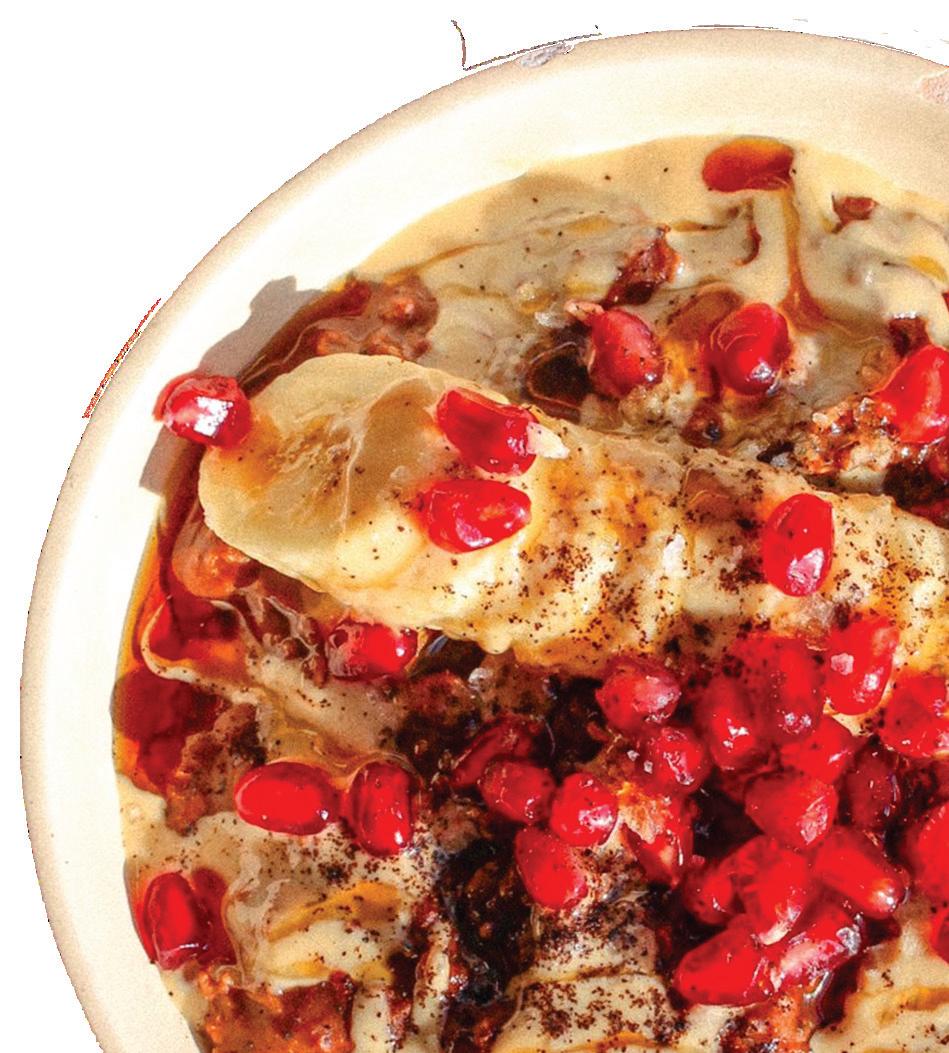
design by gillian nieh
labichi
health and geopolitical events are all on the table for discussion, along with Labichi’s continued crusade to promote the boundless potential of vegetables. Though not ready for a cookbook — a dream Labichi will address with a few more years under his belt — a restaurant concept is not far from reach.
Labichi hopes to see more of the African diaspora promoted across all platforms in the future. Cultures once deemed beneath fine dining have the opportunity to shine in widely-shared videos, cementing their rightful place in mainstream cuisine. In creating a space to exchange childhood recipes, comfort food and his favorite ways to use sesame-based condiments, Labichi is not only forming a community, but fostering confidence, acceptance and empathy among different walks of life. No matter how people choose to nourish themselves, there is a place for them at @lahbco to learn, indulge and spread positive vibes.
As Labichi said, “if there is more goodness out there, it continues to quantum leap.”
"If there is more goodness out there, it continues to quantum leap.”
the menu Select items from Good to Go

Bone-in chicken, dry rubbed with jerk seasoning then charcoal grilled
A West Indian staple, bone-in chicken cooked in mild Jamaican curry sauce

At age 27, Tony Levy migrated from Jamaica to the United States, bringing with him the culture and customs of his home country. In partnership with his wife and Chicago native Lenice Levy, the duo laid down permanent roots in the restaurant industry and established Good to Go Jamaica in 2002. Since then, the Levys have whipped up mouth-watering Caribbean food like Jerk Chicken, Brown Stew and Oxtail and tropical cocktails, all with Evanston residents in mind.
The eldest of 11 siblings, Levy’s early experience in the kitchen came out of necessity. It was his responsibility to aid his mother in preparing daily meals. Over the years, his familial passion for food grew into a desire to cater his cooking towards a broader audience in a restaurant setting.
All Good to Go Jamaican dinners are served with 2 sides, such as steamed cabbage or rice and beans
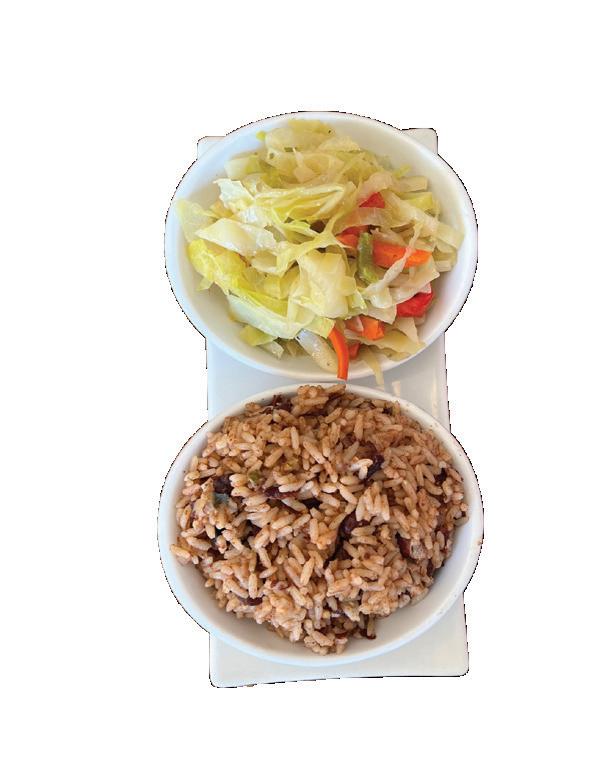
Originally located on the Chicago side of Howard Street, Good To Go started as a small quick-service restaurant with simple dishes. Their dynamic business and affection for loyal customers proved key to their 16 years of success. The restaurant built off their reputation and underwent a complete renovation of their new, current location on the Evanston side of Howard Street in 2018. The space was designed by Lenice, who used her architectural and real estate knowhow to bring the Jamaican vibe straight to the States.
The restaurant and event space is bright, colorful and full of ties to Jamaican culture. The first sight after entering is the beautiful bar and wine wall filled with Jamaican white rum, tropical cocktails and a tap filled with Rum Punch. Yes, a
Rum Punch tap. This signature cocktail has been handmade by Tony since Good to Go was founded in 2002. Though the full recipe remains a secret, what makes Tony’s version a best-selling menu item is “the ginger touch that complements the pure Jamaican white rum,” said general manager Shyvonne Leslie.
A huge part of Good to Go’s mission is serving the community, specifically Evanston’s Caribbean population. Partnering with park districts to deliver low-cost Thanksgiving meals and opening their doors to provide a safe space for college
than Jerk. Decadent goat and chicken curries are popular dishes along with a wide variety of seafood. Stir frys, pastas, sandwiches and plenty of vegetarian options are also available for order. Paired with a side of caramelized plantains, any entree makes for the perfect sweet and savory bite. The menu has also expanded over the past few years to include breakfast items, like a French Toast Flight, appetizers like Shrimp Spring Rolls and Oxtail Mac & Cheese as a side.
As for drinks, Leslie insists on trying the Frozen Bob Marley. The ode to the reggae king features layers of frozen strawberry and mango flavored Jamaican white rum. Tony’s all-natural house blended juice known as the Stamina Daddy — a concoction made from oats, okra, green banana, peanuts, tonic and stout — has become a cult favorite of returning patrons for its unmatched meld of flavors.
events is all part of their efforts to support the city “in any way possible,” said Leslie. The versatile atmosphere is fit for family gatherings or a night out, and doors are always open to all.
In addition to the Rum Punch, which can be purchased by the bottle, Good to Go also packages and sells their homemade Jerk Sauce — made using Tony’s grandmother’s recipe. This explosion of tangy, sweet, smoky and spicy can accompany nearly every dish on the menu, including Jerk Rib Tips, Ackee and Saltfish, and the bestseller Jerk Chicken. For Leslie, her goto is always the Jerk Chicken Pasta with alfredo sauce.
Though a fan favorite, Good to Go shows there is more to Jamaican cuisine
The options for entertainment and community building are endless, yet another way Good to Go puts the focus on the guest experience. On Fridays and Saturdays, the dining room is lit up with the sounds of live reggae music or a DJ, and Brunch and Beats is a common weekend occurrence. Good To Go also offers cooking and cocktail-making classes for private events.
Reviews from satisfied customers have the Levys considering a return to Chicago in the near future — with the hope of spreading Jamaican flavors to an even greater audience.
“We are always looking to connect with more students and communities around the area,” Lenice said.

Far away are the days Levy spent in his mother’s kitchen, but her influence and his dedication to authentic Jamaican food remains. For students looking for Jamaican fare, lively music or a strong cocktail during a night out, Good to Go is sure to have it all.
Hurry on to Howard, the Rum Punch is
“WE’VE BEEN ON HOWARD STREET FOR 21 YEARS. WE FEEL A RESPONSIBILITY TO MAKE IT BETTER.
SHYVONNE LESLIE MANAGERphotos by nadia bidarian and sulwen ma story by charlotte newman and cammi tirico
After heading across seas, we found comfort and culture in Spanish food
Moving halfway across the world to Spain for a semester abroad, we faced a multitude of uncertainties: a new city, a new language, a new culture and a new cuisine. 4,172 miles away from home, we turned to food as a source of comfort. Little did we know, our need for stability and love of flavor would allow for a greater understanding, acceptance and appreciation of Spanish culture — one we happily learned revolves around food.
Spanish food and culture go together like churros and chocolate (more on that later…). Madrid is an extremely social city where family and friends gather for nearly every meal, be it tapas, dinner or a drink. Gatherings often take place at local restaurants, cafes and bars. Spanish residents rarely meet at each other’s houses, so at any time of day and in all parts of the city, you can find groups of people sitting outside, enjoying a light bite with a shot of espresso or a glass of wine. Schedules are dictated by the meals eaten in a day — a part of culture shock we happily adapted to. The value of community and consumption interconnects to produce a culture keen on sharing, a defining aspect of the Spanish dining experience.
Spain’s sharing-style specialty is known as tapas. “Going for tapas” means heading out with friends for small plates typically served
between meal times, and passing them around to those you love. For us, this translated to tapas with classmates after our lessons or meeting up with Northwestern friends also studying halfway across the world. The entire purpose of tapas is to try more than one thing at a time. Instead of picking one dish, you get to have them all. Being the foodies we are, we quickly fell in love with this snacking concept.
Like hot dog carts in New York City, tapas are everywhere in Madrid. Served at coffee shops, bars, markets and restaurants, they are most often enjoyed in the outdoor seating area nearly every restaurant sets up on the sidewalk. Most tapas menus throughout the city do not vary much. Nearly every tapas place has the same set of set options, but don’t confuse simplicity for lack of flavor. There is a reason why classics become classics. Some of our favorite traditional tapas include Papas Bravas, Pan y Tomate and Tortilla Española.
Papas Bravas are similar to home fries in shape and texture, but they have a spicy sauce that gives the potatoes an extra kick. The little carb delights are served in a bowl with toothpicks sticking out, creating easy-to-share finger food. Pan y Tomate is an essential tapas dish and a frequent breakfast order in Spain. The name says it all: a lightly toasted baguette with
a spreadable tomato jam on the side. This option is so popular it can often be ordered even if it’s not listed on the menu. Tortilla Española is one of Spain’s national dishes. An omelet made with potato folded into the eggs and baked to perfection, when served tapas style, it can be cut into cubes, pierced with toothpicks like Papas Bravas or plated whole. We have also seen it sandwiched between two pieces of baguette with a drizzle of honey mustard and caramelized onion — magnificent. These recipes are far from complicated and rely on very few ingredients, but that is the point of tapas. The food is simple, quick and easy so more focus can be put towards those you’re sharing it with.
The Mercado de San Miguel is the holy land of tapas. Tourists and locals alike flock to this landmark located in Sol, the heart of Madrid, to try an array of the city’s best tapas. Most stands in the market have their own specialty, be it bitesized Tortilla Españolas, shots of gazpacho, Spanish olives or mini Tostadas with an assortment of toppings. Other booths are more specific, selling, for example, varieties of smoked salmon or mixed grilled vegetables, warmed up and finished with a touch of flaky salt. Between the bright and colorful fresh fruit stand (that also happens to make amazing mojitos), the homemade empanada stand
design by isabelle hauf-pisoni
and an entire area dedicated to all things dessert, there is something for everyone at the Mercado de San Miguel. Not only does the market boast a holistic taste of the country for customers to try, its buzzing atmosphere shows yet again how culture, food and community intertwine in Spain.
While tapas are pleasing, easy and social, nothing beats Madrid’s Churros y Chocolate. We don’t know when or why the sweet treat was invented, but we are more than satisfied with its importance in Spanish cuisine. We are even more thankful for its versatility and its ability to be a breakfast, snack or dessert. In full transparency, we polished off many an order of Churros y Chocolate in between morning classes early on in our study abroad career.

Available on most every menu, the best Churros y Chocolate comes from Chocolatería San Ginés. The cafe opened its doors in 1894 in the back corner of a Spanish side street and has since become a renowned establishment integral to Madrid’s food scene. Open 24 hours a day, the persistent line down the block is a testament to their product. Trust us, the taste is worth the wait. The churros’ crispy exterior is lightly covered in a sugary coating which contrasts the soft inside. Unlike American churros, there’s no cinnamon sugar coating or rich buttery taste. San Ginés sticks to the naked churro and lets its simplicity shine. The chocolate component is served on the side in a mug as a thick beverage. It is closer to a thick chocolate dip than a classic hot chocolate, but who are we to judge the way the Spainards consume this rich, chocolatey
goodness? Expert tip: locals take a sip of the drink between dips of churro.
It is unsurprising to see locals drinking their chocolate sauce, considering the prominent role beverages play in their culture and cuisine; it is hard to find a time during the day when you don’t see someone drinking something in Spain. Coworkers and students grab a beer at lunch, friends clink glasses of wine with tapas after Spain’s midday siesta and diners order pitchers of Sangria at dinner any night of the week. There is nothing more quintessential to Spanish drinking culture than Sangria – a mix of fruit juices, soda water and red wine.
Sangria’s position in traditional Spanish cuisine is controversial: is it really traditional or is it a tourist trap? We may not be experts, but we do have a little knowledge on the subject. One of our favorite nights in Madrid was spent in a hidden bar that seemed to be taken straight out of the 1940s. The walls were covered with hand-painted quotes by artists in Spanish, Italian and French. The 60-somethingyear-old bartender spoke not a word of English but helped us decipher the meaning behind each line, while another Spanish gentleman sat down at the piano and played ‘Vienna’ and ‘Piano Man’ by Billy Joel. We were the
only Americans in the place. It was the most “Spanish” experience we have had since moving here. And the only drink they served? Sangria. Think we solved the debate right there.
Through every potato-on-atoothpick, glass of sangria or chocolate-dipped churro, we learned a little more about our new surroundings. We’ve come to understand what it means to gather around a meal and the role it can have in shaping the type of food people eat. Not to play into the typical study abroad cliché, but being in a new country changed us. Kinda. It somewhat changed our palettes (we will definitely need to find a churro fix at home) and drastically changed our views on the importance of food in Spanish life.
Get the scoop on frozen sweets from all around the world


Bingsu is a Korean shaved ice dessert doused in various fruits, sweetened condensed milk, fresh syrups or red bean. Tealicious Bubble gives a modern take on the historic Korean dessert with their brown sugar and fruit sugar shaved ice varieties. We tried their mango and strawberry shaved ice, which included fine ice chunks steeped in sweet and sour syrups topped with chopped fruit.


Kulfi is a type of Indian ice cream served on a stick, typically sold by street vendors and sprinkled with chopped nuts. Popular flavors include malai (clotted cream seasoned with cardamon), rose, pistachio and mango. Evanston’s famous Mt. Everest Restaurant offers both mango and pistachio kulfi, a decadent balance of dense and smooth cream. Not overly sweet, Kulfi bursts with bold layers of saffron and rose water, ingredients central to Indian cooking.
Originally from Thailand, rolled ice cream is as entertaining as it is delicious. The ice cream base is mixed with other ingredients, like crushed cookies, coconut flakes or chopped nuts, then chilled and rolled across a frozen metal surface. We can’t explain the science but we know the flavors work! Legend Tasty House in Chicago is a must-try spot for endless topping-to-roll combinations.
Gelato is an Italian ice cream dessert expertly made from milk, sugar and significantly less cream than Americanstyle ice cream. Its texture is substantially smoother and often more flavorful compared to its US counterpart. Frió Gelato in Evanston specializes in Argentinian gelato inspired by Italian preparation methods. Best sellers include Tramontana (milk caramel and chocolate chips in vanilla gelato), Dulce de Leche and Palta or avocado.
Mochi is a Japanese dessert made from glutinous rice flour, water, sugar and frozen red bean paste. The elastic dough is rolled out and filled, making for a multi-textured bite. Americans popularized ice cream filled mochi rather than red bean paste — an ingredient less popular in the States. Grab a green tea or red bean paste mochi from Evanston’s Kansaku and indulge in the chewy treat.
Reminiscent of a popsicle, paletas are frozen Mexican desserts made from fresh fruit or a creamy base like Belgian chocolate or vanilla bean. Visit one of Paleta Factory’s many Chicago locations to try their Arroz con Leche, Guava or Cookies and Cream renditions.


Folded or filled, my favorite French breakfast is one everyone needs to try
The smell of fresh batter and the sound of the sizzling pan never failed to stir my excitement on a bright Sunday morning. A native Parisian, my dad is the master of our family crepe recipe and has created one of my favorite breakfast traditions to this day.
Our original recipe came from my childhood French teacher, AnneMarie. After moving to Irvine, California from Paris, my dad went in search of a French tutor to keep intact a sense of French community and connection for his children. Anne-Marie taught us weekly lessons in language and culture, becoming more like a grandmother than an academic figure.
As a way to practice our vocabulary, Anne-Marie would invite my brother and I over to her house to play games while she made crepes. Sitting at her small, two-seat kitchen table, my brother and I watched her carefully pour the batter she made prior to our arrival onto her specialized crepe pan, one with softened edges
used to produce a more rounded crepe. She laid out a spread of toppings for us to choose from — sugar, lemon slices, an array of jams and Nutella — as we eagerly awaited our feast.
My go-to was a classic sugar crepe. I would sprinkle a bit of sugar onto the hot crepe and delicately roll it before digging in. If I wanted to change it up, my second choice was strawberry crepe; a thin spread of jam evenly dispersed throughout the entire surface. My brother would always opt for a heavier Nutella crepe or one topped with sugar and a squeeze of lemon. After chowing down, came conversations in French, which usually took place over a game of Crazy 8s or Rummikub. Dying to bring her delicious creations home, AnneMarie scribbled down her easy recipe onto a yellow notepad and sent us on our way. Since then, we’ve tried our best to do her crepes justice, and her method always keeps me coming back for more.
4.5 cups of flour 5-6 eggs 4.25 cups of milk 6 tablespoons of melted butter
1 cup of water pinch of salt
story by claire desbans design by rose kanaley recipe instructions
Mix together the flour, eggs, salt, milk and water until smooth. Then add in the melted butter and mix until smooth. Let rest in the refrigerator for about 2 hours before making them on the pan.
story and photos by lulu goldman
A full day’s worth of microwaveable, easy-to-make Cuban recipes you can have ready in a flash.
Adjusting to dining hall fare can be a shock to the taste buds and digestive systems of many college students. For those who were raised on cultural foods, the monumental shift is even
more jarring when traditional dishes are not made readily available like they are at home. Though Elder and Allison are growing on me, I still miss the warm spices and comforting
texture of the Cuban food I used to feast on. Thankfully, I have found ways to recreate Cuban staples in my dorm that are quick, cheap and — most importantly — microwavable.
Place frozen baguette on a paper towel and microwave for 30 seconds, then slice and heat for another 30 seconds, or until warm.

Microwave water for 45-50 seconds in a microwave-safe mug.
Stir in instant espresso, fill the rest of the cup with milk and microwave for 1 minute until steaming. Add sugar to taste.
Spread butter on the warm bread while waiting for Café con Leche to cool.
Follow the directions on microwavable white rice to prepare. Make sure to let the rice sit for a few minutes in order to become fluffy. Transfer to a microwave safe bowl.
Carefully crack an egg into the rice bowl, and pierce the egg yolk lightly with a knife.

Cover the bowl with a paper towel or microwavesafe plate and microwave for 45 seconds, until the yolk is covered in a translucent white film.
Let sit for 1 minute, and salt to taste.
- ½ cup sugar - 1 teaspoon cinnamon - ½ teaspoon vanilla extract

Prepare rice-to-water ratio according to package instructions, adding in a squirt of lemon juice before cooking. Microwave rice for 30 seconds longer than the package instructs and let the rice cool for ten minutes.

Crack one egg into the cooled rice, stirring quickly to avoid curdling. Add the milk, sugar, cinnamon and vanilla extract, and mix well.
Cover and microwave for 3 minutes. Stir the mixture well, and microwave for two additional 30 second intervals – stirring between the intervals.
Place pudding in the fridge to set for at least 1 hour. Top with more cinnamon and enjoy!
For twenty-five years, lifelong vegan Kirti Sheth has owned and operated Arya Bhavan, an entirely plant-based Indian restaurant on West Devon Avenue. Her mission is to share her love for healthy, homemade meals with others, prioritizing fresh, flavorful ingredients. Sheth’s philosophy promotes better food choices for the sake of mind, body, and even the Earth itself.
Sheth grew up eating plantbased meals on her family’s farm in Gujarat, India, which sparked her understanding of the connection between food, family and community. In contrast with the artificial and processed foods all too common in the Western diet, Sheth’s mother and sisters taught her to cook by building each meal based on seasonal selection and hand-picked produce. Their efforts in the kitchen were a labor of love for the sake of feeding others — a responsibility Sheth takes
seriously in her restaurant.
“My customers are like family to me,” Sheth said. “I love feeding them.”
The menu features dishes free of bleached flour, preservatives, refined sugars and heavy oils. Arya Bhavan also steers clear of all genetically-modified, canned or processed ingredients when it comes to cooking updated vegan entrees like Bhindi Masala and Malai Kofta. For Sheth, food is the best medicine. Aware of the struggle many Americans face with diabetes, high blood pressure and fatigue, she hopes her nutrientdense plates show restaurantgoers they can maintain a wholesome, healthy lifestyle while still indulging in a satisfying and comforting meal.
To cater to increasingly common dietary restrictions, every dish on the menu is naturally or can be made gluten-free. Sheth accommodates diners with allergies by maintaining a second kitchen where all allergy-free



dishes are made and is constantly experimenting with new recipes, as to create a menu equally nutritious and approachable for all people.
Reliant on a few staples like peas and potatoes, it is remarkable the variety of dishes Sheth is able to craft for her mixed platters and entrees. The oversized, gluten-free Samosas feature a thick crust and a filling bursting with classic Indian spices — a treat any celiac will rejoice in. The comforting Potato Vada consists of mashed potato balls seasoned with cilantro, green chili and lemon, with a crispy chickpea flour crust. The Vegetable Cutlet and Aloo Tikki patties, tasty on their own, are even better dipped in either of the two delectable homemade chutneys (cilantro and tamarind) served alongside the platter. Masala Dosa — a thin, golden crepe made from rice flour, stuffed with Indian-spiced mashed potatoes and onions — is an easy favorite. The South Indian Sambar and coconut chutneys are fresh, creamy and add an extra flair to

the neutral-tasting dosa. Other veggie-filled classics like Chana Masala and Vegetable Biryani pack a fibrous and protein-rich punch, and leave none of the additives in other recipes left to be desired. It’s no surprise that Malai Kofta finds itself an Arya Bhavan best seller. The veganized version features sweet potato and green vegetable dumplings topped with a tomato, onion and cashew gravy. The decadent sauce reminiscent of Thai red curry is the star of the show: savory, sweet and spicy all in one spoonful.

Healthy, of course, does not mean sans dessert. Naturally sweetened with bananas, dates and almonds, Arya Bhavan’s four-

gluten-free Indian recipes with a Sheth twist. The book will mainly focus on quick and easy recipes perfect for a night in along with a few house favorites from the restaurant.
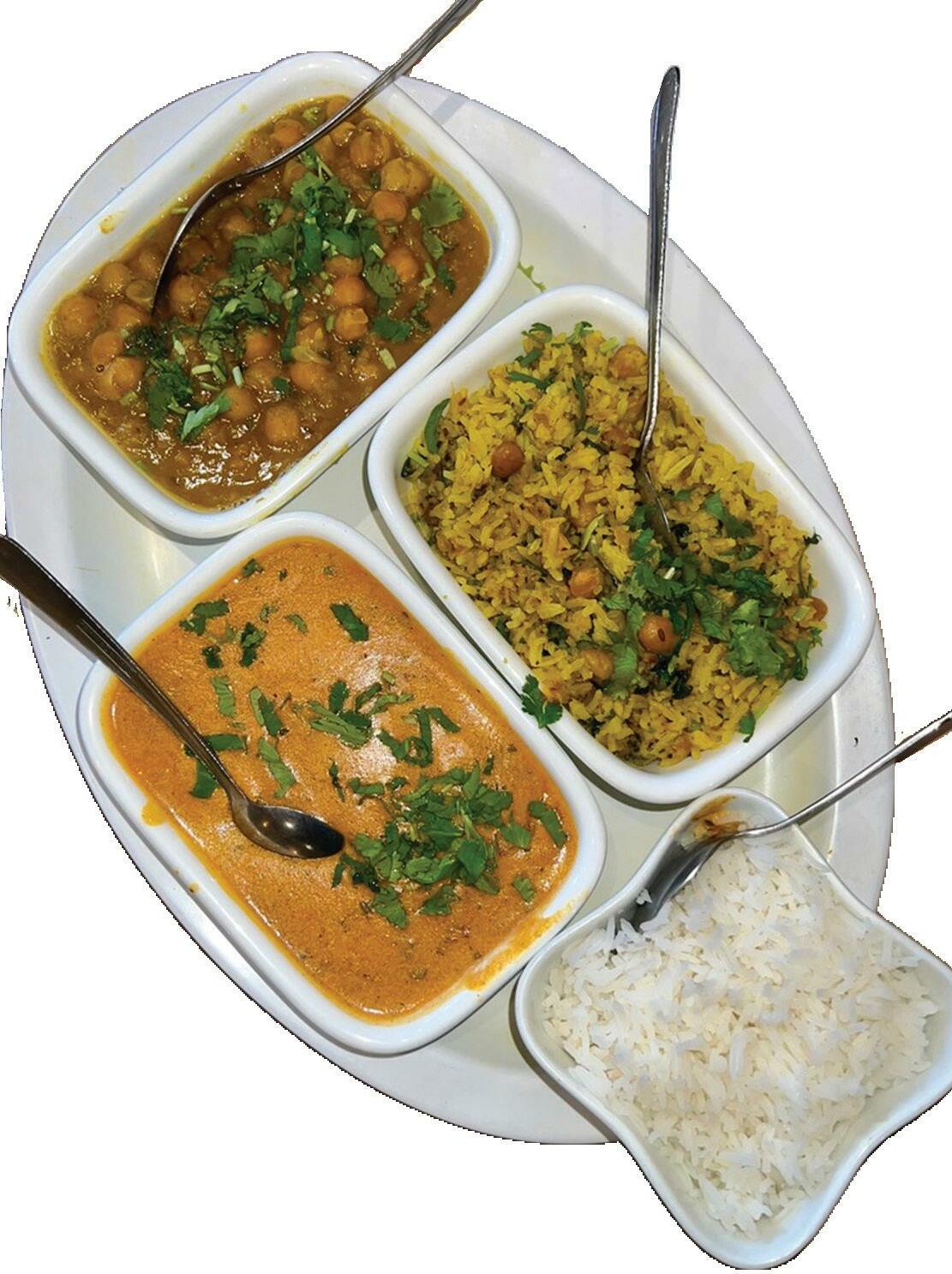

Sheth also offers cooking classes in the Arya Bhavan kitchen, so customers can take their health into their own hands when they’re not dining in her cozy, plant-

from her family’s farm, her dedication to serving only the highest quality offerings seeps into every delicious bite. Sheth came back full force after the pandemic to feed hungry Chicago diners looking for a healthy option. Open for both inperson dining and take-out, Arya Bhavan remains a beacon of plantbased cuisine, thankfully only a quick four miles from the Arch.

“My customers are like family to me. I love feeding them.”
Kirti Sheth | Arya Bhavan ownerphotos by kirti
sheth
“A country becomes a first world country the day that you can buy third world foods there,” said home cook James Gomez.
Between 1969 to 1989, the Communist regime of the Czech Republic devastated the country’s culinary scene by blocking imports and shutting down borders. Bare supermarket shelves revoked the liberty of food preferences. The government controlled all citizen choices and limited every desire.
Gomez grew up in California and lived in London and Vienna as a journalist before settling in Prague in 1994. While shopping to cook his first Czech Thanksgiving meal, he was disappointed by the lackluster international food section. It contained “one type of rice, a can of beans and some chow mein in a jar.” No turkey, cranberries or cornmeal to be found.
Fast forward nearly 30 years to my first weekend studying abroad in Prague. It’s Sunday morning at
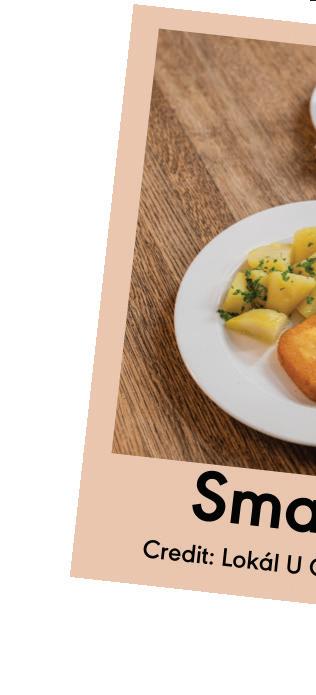
11:00am as I stroll past a busy café near my apartment. Decorated with hanging plants, white brick walls, big wooden tables and eccentric posters, Cafefin looks like any American coffee shop. I am immediately drawn inside.
I open a menu and my sleepridden eyes spring open in shock. The avocado toast and cold brew comfort foods I know from home are eons away. Instead, I sit at a Coffee Lab doppelganger, confronted with an overwhelming list of beer, Bibimbap, Banh Mi, banana bread and kimchi to satisfy my morning hunger. Endless options smack-dab middle of Europe. What!?
In the 1990s, Czech citizens started traveling internationally, bringing pieces of foreign culture back with them. Under Communist rule, spaghetti was prepared with either ketchup and cheese or butter and poppy seeds. Traditional marinara was out of the question
given the scarcity of resources available. After people ventured to Italy, restaurateurs imported authentic Italian ingredients for more invigorating pasta dishes. These encounters with global cuisines set off a culinary explosion that brought foods of the world to Prague.

“The taste of freedom changed demand,” Gomez said. “The Czech taste bud has changed.”

Unlike his first years in Prague, Gomez can now easily buy the ingredients used in a traditional Thanksgiving dinner. Recipes he learned from his mother and grandmother who owned a Mexican restaurant in LA, like enchiladas and fajitas with homemade tortillas, can be shared with his family thanks to a wider variety of groceries. His

influenced by so many cultures.”


Almost every traditional Czech food originated elsewhere. Goulash (meat soup) comes from Hungary, Knedliky (dumplings) from Germany, Schnitzel (fried chicken) from Austria, Svičkova (cream sauce over meat) from France and potato salad from Russia.
My study abroad director Petra Key has lived in the Czech Republic her entire life. She grew up in the era of “one producer and one variety” food and “just white” yogurt under Communist rule. She remembers her first encounters with “foreign” cuisine and the early opening of international doors.
“The Chinese food I experienced in the late 1990s was stir fry made
food is available in abundance. Restaurants of every cuisine line the streets of Prague. Tapas, sushi, samosas and gyros all have a home in restaurants across the country. These once restricted flavors are now commonplace in the typical Czech diet.

My favorite meal in Prague is from a restaurant called KRO – a bistrorotisserie-coffee-bakery combo. The menu ranges from Potato Nachos, Pumpkin Curry, Grilled Broccoli and Caesar Salad to Pork Knuckle Sandwich and Chicken Combo rice bowls. My usual is the Pulled Chicken Combo Special –jasmine rice with pulled chicken, grilled vegetables, kimchi, brown butter, soy sauce and sesame seeds. The bowl itself is a meld of global influence and excellent
the expansive nature of Czech food and its many facets. After decades of mundane dishes, there is a desire to try it all.

Avakian said Prague’s culinary scene thrives on nostalgia and moving forward. Recipes from the past are updated with unique twists and distinctly Czech flare.
“People are looking to the past and trying to recover,” Avakian said.
Whether creating fusion cuisines or elevating traditional recipes with foreign ingredients, the food in Prague is far from limited. The menus at Cafefin and KRO makes clear, there is a place for every taste in the Czech Republic, it only takes a little exploration.
From bagels and lox and sugar-topped Sufganiyot (jellyfilled donuts) to tender brisket and decadent apple cake, food is an integral aspect of the Jewish identity — the bursting flavors a testament to their resilience and spice for life. Once a week, the Northwestern Hillel Cookbook Club comes together to develop and indulge in delicious recipes inspired by generations of Jewish cooking. President Lev Pearlman shared a few of their favorite dishes for student kitchens and a “fool proof” method for the perfect challah.
With origins in the Middle East and Northern Africa, Shakshuka is the definition of a one-pan recipe using ingredients you likely have on hand. When tomatoes are out of season, Pearlman recommends a can of San Marzano whole peeled tomatoes as a replacement.

Ingredients
1 large onion
1 large bell pepper
3-5 cloves of garlic
1 tablespoon cumin
1 tablespoon paprika
1/8-1/4 teaspoon cayenne
1 28 oz can whole peeled tomatoes
4-6 eggs
Warm bread or pita for serving
The ultimate comfort food for a cold Chicago winter, classic matzo ball soup never fails to please. Following the recipe for matzo balls posted on the box, Pearlman emphasized a few tips from the experts: use club soda instead of water and cook directly in the base stock for a more robust flavor.

Ingredients
2 large carrots, washed
1 large onion
4 stalks of celery, washed 1 teaspoon black peppercorns
1) Thinly slice bell pepper and onion, and finely mince garlic. If using an oven safe pan, preheat the oven to 375 F.
2) Heat an oven-safe large skillet or large skillet with a tight-fitting lid over medium heat; add three tablespoons of olive oil along with the bell peppers and onions. Season with salt, pepper, cayenne, paprika and cumin.
3) Cook for 15-25 minutes until the onions and bell peppers are soft and beginning to caramelize, then add the garlic and stir until fragrant (about 30 seconds).
4) Add the canned tomatoes and their juices to the pan, cooking for another 15-20 minutes until the tomatoes and liquid have cooked down.
5) Crush tomatoes with a potato masher or wooden spoon and continue to cook until you reach your desired consistency, about 15-30 minutes. Adjust seasoning to taste with salt, pepper and cayenne.
6) With a spoon, make 4-6 shallow indents in the tomato mixture and crack 4-6 eggs, each into their own well. If using the oven, transfer the pan to the oven and bake for 5-10 minutes until the whites are cooked and the yolk is still runny. If using the stovetop method, cover the pan with a tight-fitting lid and cook for 5-8 minutes until eggs reach desired doneness.
7) Divide and serve with warm bread or pita.
2 bay leaves
1 whole chicken 1 box matzo ball mix
1) Slice carrots and celery into 1-2 inch pieces, quarter the onion with the skin on.
2) Combine all ingredients in a large stock pot, cover by 1 inch with water, and bring to a boil.
3) Simmer the stock for 4 hours and up to overnight on low heat. As the stock simmers, skim any impurities and scum that rise to the top of the pot.
4) Strain stock, remove and discard chicken and vegetables.
5) Strain the stock again through a mesh sieve into a clean pot. Bring back to a simmer, and add salt to taste. The best matzo ball soup is a well-salted matzo ball soup.
6) Using the instructions on the back of the matzo ball mix or meal container, continue the recipe making sure to use the base stock to cook the matzo balls.
The crown jewel of Jewish baking. For this renowned loaf of braided bread, Pearlman said there is no recipe better than Claire Saffitz’s from New York Times Cooking. Tried and tested over many months, Pearlman said the instructional video makes it easy for bakers of any level to follow along. Find the recipe here at the NYT Cooking website.

Looking for more delectable content? Follow us on Instagram @spoon_nu and check out all our digital articles at our website www.spoonuniversity.com

